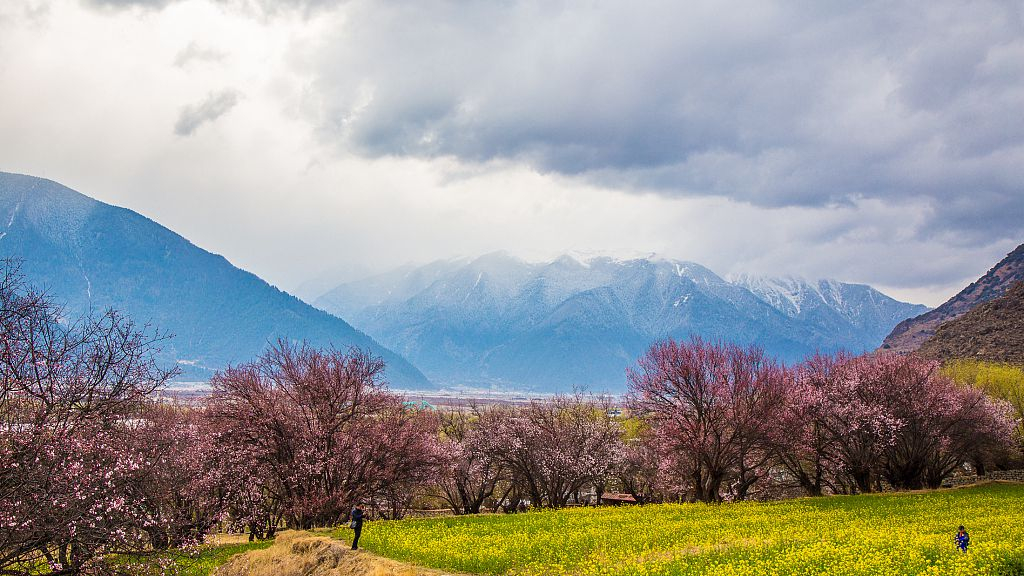
Destination
20:29, 25-Mar-2019
Tibet's banks on tourism boom for economic growth
CGTN

It was four days away from the opening of the annual peach blossom festival and workers were busy setting the steel-structured stage. Yet hundreds of tourists were already bustling under the wild peach groves in the mountains of Kala Village, Nyingchi City, in the plateau region of Tibet.
Tibet Autonomous Region boasts exotic culture and stunning landscape, despite its average altitude of 4,000 meters.
A key factor accounting for this spike is Tibet's improved transport system, such as an expanding network of highways and an increase in flight links with other regions as well as hospitality facilities.
In the village of Zhaxigang in Nyingchi City, 54 out of 68 households have opened home inns to cater for the rising number of tourists. Nyingchi boasts beautiful flowers, mountains, canyons, waterfalls and glaciers and is a top tourist destination besides the regional capital of Lhasa.
Just 3km away from the village, Lulang International Tourism Town with an investment of 3.8 billion yuan (567 million U.S. dollars) from Guangdong, received more than a million tourists last year, with sales revenue of 50 million yuan.
The regional government expects to further boost the tourism sector, which accounted for more than a third of the region's economy in 2018, up from 29 percent in 2017.
Tibet's GDP grew by 9.1 percent in 2018, among the nation's fastest.
A new 450-km-long railway is being built between Lhasa and Nyingchi, a sure impetus to tourism. It is part of a grand plan to build a new railway from Lhasa to Chengdu, capital of neighboring Sichuan Province, via Nyingchi.
To attract more tourists during the winter, the region has rolled out a spate of preferential policies including waiving admission charges for some scenic spots and discounted flight tickets during the winter season.
Tibet received 2.46 million tourists from last November to March 15, up 84.2 percent year on year, and the region's tourism industry brought in around 2.62 billion yuan during the same period, a year-on-year growth of 41.1 percent, according to the regional tourism development department.
Source(s): Xinhua News Agency

SITEMAP
Copyright © 2018 CGTN. Beijing ICP prepared NO.16065310-3
Copyright © 2018 CGTN. Beijing ICP prepared NO.16065310-3